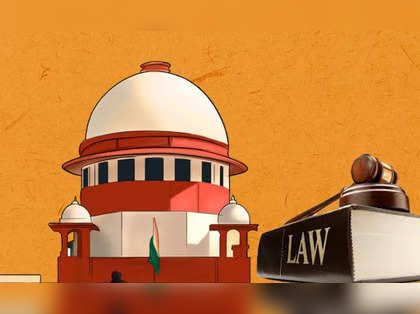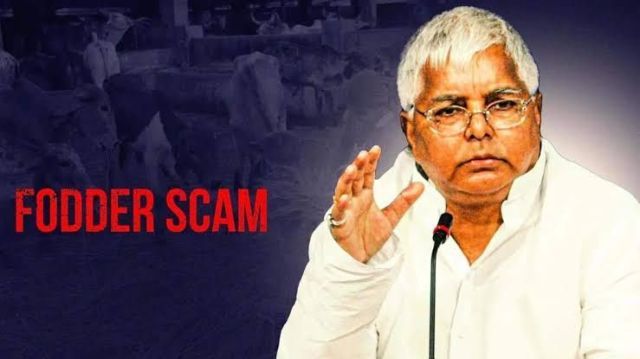Author: Avishi Saini, a student at University Institute of Legal Studies, Panjab University, Chandigarh
Test Identification Parade is a procedure which is used to verify the accuracy of a witness’ identification of a suspect. During this procedure, the witness is required to identify, from among several individuals, the person whom they had seen in the context of an offence.
Test Identification Parades (TIPs) often hailed as indispensable tools in the arsenal of criminal investigations, stand at the crossroads of legal scrutiny and practical necessity. In the pursuit of justice, law enforcement agencies globally resort to these procedures to facilitate the identification of suspects by eyewitnesses. However, the admissibility of evidence procured through TIPs raises complex legal questions, particularly concerning the delicate balance between the imperative of law enforcement and the preservation of the fundamental rights of the accused. This blog undertakes a critical examination of the admissibility of TIP evidence and its profound implications on the constitutional safeguards afforded to individuals facing criminal charges.
Within this discourse, I will endeavor to navigate through the intricate web of legal principles, procedural safeguards, and empirical evidence to ascertain whether TIPs, as a means of securing identification evidence, align with the overarching goals of fairness, reliability, and constitutional integrity in the criminal justice system.
First and foremost, understanding the statutory authorization of Test Identification Parades (TIPs) within India’s legal framework is imperative. TIPs find their statutory foundation in Section 54 of the Bhartiya Nagrik Suraksha Sanhita, 2023, and Section 7 of the Bhartiya Sakshya Adhiniyam, 2023. Section 54 delineates the procedures for identifying individuals arrested for offenses, stipulating that if identification by others is necessary for investigation purposes, the court can direct the arrested person to undergo identification procedures. Notably, in cases involving mentally or physically disabled persons, the supervision of a Judicial Magistrate is mandated to ensure the utilization of methods comfortable for the disabled individual, with video recording required for such identifications. On the other hand, Section 7 of the Bhartiya Sakshya Adhiniyam, 2023 (BSA) pertains to facts necessary to explain or introduce relevant facts or issues. It deals with the facts that are necessary to be explained or introduced as an issue of an argument in a lawsuit. Consequently, TIPs are recognized as a statutory permissible activity; with Section 54 governing the procedure while Section 7 addressing its admissibility as valid evidence.
Typically, TIPs serve the purpose of testing the memory and veracity of witnesses, providing a preliminary assessment of the direction of the investigation based on the witness’s initial impression of the accused. However, it is crucial to underscore that TIPs do not constitute substantive evidence in and of themselves; rather, they serve as corroborative evidence. Substantive evidence arises from identifications made by witnesses in the courtroom. It is a prerequisite for TIPs to precede courtroom identifications. If a witness successfully identifies the accused in court subsequent to identifying them in the parade, the courtroom identification assumes the status of substantive evidence, while the parade identification remains corroborative.
It is noteworthy that TIPs are permissible only when the accused and the witness are strangers to each other, as established by a series of Supreme Court judgments. For instance, in the case of Gireesan Nair & Ors. etc. v. State of Kerala (2022) 1 SCC 180, it was emphasized by the Hon’ble Supreme Court that if the identification during the TIP occurs after the accused is shown to the witnesses, the evidence obtained from the TIP becomes inadmissible and meaningless.
The notion that Test Identification Parades (TIPs) infringe upon the fundamental right against self-incrimination, enshrined in Article 20(3) of the Constitution of India, warrants careful examination of the protection offered by this constitutional provision. It says, “No person accused of any offence shall be compelled to be a witness against himself”.
One might object that: by the very virtue of Article 20(3), the protection against self-incrimination is not limited to testimonial evidence provided by the accused. It encompasses any act or statement that may implicate oneself in criminal activity. Therefore, participating in a TIP, which is statutorily mandated and cannot be refused by the accused, constitutes a form of passively compelled evidence provision. Extracting any evidence from the accused during investigation, falls under the scope of Article 20(3) and is condemned. Therefore, this coerced participation in a TIP amounts to an unjustified intrusion into the mental privacy of an individual.
Contrary to such objections, the conduct of a TIP not only does NOT violate article 20(3), but also upholds the principles of fairness, reliability, and constitutional integrity in the criminal justice system.
To better understand this argument, it is pertinent to grasp the true purport of Article 20(3), which was laid down in the landmark case of M.P. Sharma v. Satish Chandra, AIR 1954 SC 300. Justice Jagannadhadas, delivering the judgment, observed: “Indeed, every positive volitional act, which furnishes evidence is testimony, and testimonial compulsion connotes coercion which procures the positive volitional evidentiary acts of the person, as opposed to the negative attitude of silence or submission on his part.” It is evident that Article 20(3) safeguards individuals from providing testimonial evidence against them, particularly focusing on positive volitional evidentiary actions leading to self-incrimination. If coercion is employed to elicit evidence from an accused that can only be obtained through their affirmative voluntary action, the constitutional guarantee will intervene to safeguard him. If the evidence can be obtained without requiring any affirmative voluntary action on the part of the accused, Article 20(3) of the Constitution will not be applicable. Consequently, participation in a TIP conducted within the ambit of Indian laws does not contravene the fundamental rights of the accused.
Moreover, it is crucial to distinguish between affirmative voluntary evidence and actions performed under external compulsion. Mere presence among non-suspects does not constitute affirmative voluntary evidence on the part of the accused. The act of witness identification originates from the witness’s actions, not the accused’s volition. This principle is echoed in the landmark case of Holt v. United States, (1910) 218 US 245, where it was established that mere attendance or the exhibition of the body cannot be deemed as furnishing any positive volitional evidentiary act. In such instances, the accused is not providing testimony but merely exhibiting factual information. Therefore, the participation of the accused in a TIP does not infringe upon their fundamental rights, as it does not entail testimonial evidence coerced through affirmative voluntary action.
In another landmark case of Peare Lal Show v. The State, AIR 1961 Cal 531, it was observed that if the accused was merely required to exhibit himself in the test identification parade, this act of exhibition does not constitute a violation of the rule against self-incrimination, as the accused’s compelled exhibition of himself or part of his body does not amount to a positive volitional evidentiary act. The same principle was later reiterated in a catena of Supreme Court judgemnts, including Mukesh Singh v. The State (NCT of Delhi), AIR 2023 SC 4097.
Furthermore, by the identification of potential suspects by witnesses, TIPs provide a crucial mechanism for verifying the progress and direction of the investigation, thereby promoting the administration of justice in accordance with the rule of law. If a witness is unable to identify the accused during a TIP, it may lead to an inference that the witness’s allegation against the accused is unfounded. This underscores the crucial role of TIPs in ensuring a fair trial not only for the victim or witness but also for the accused. Moreover, the inability of a witness to identify the accused serves to protect the accused’s rights by casting doubt on the veracity of the allegations leveled against them. Thus, TIPs play a vital role in upholding the principles of fairness, transparency, and justice within the legal system.
In summation, the admissibility of Test Identification Parades as evidence within India’s legal milieu necessitates a judicious assessment of statutory provisions, legal precedents, and constitutional tenets. While TIPs serve as indispensable tools in criminal investigations, their admissibility must be contingent upon the adherence to legal safeguards and the protection of the accused’s rights. Striking a balance between law enforcement exigencies and fundamental rights is imperative to uphold the integrity and equitability of the criminal justice apparatus. Through a nuanced comprehension of legal doctrines and constitutional imperatives, India can ensure that TIP procedures resonate with the overarching objectives of justice, reliability, and constitutional integrity.
Frequently Asked Questions (FAQs)
1. What is a Test Identification Parade (TIP)?
A Test Identification Parade (TIP) is a procedure used in criminal investigations where a witness identifies a suspect from a group of people. It tests the witness’s memory and accuracy in identifying someone they saw during an offense.
2. Why are TIPs considered important in criminal investigations?
TIPs are important because they help verify the accuracy of a witness’s identification, which can provide crucial corroborative evidence during investigations and trials.
3. What legal framework governs TIPs in India?
In India, TIPs are governed by Section 54 of the Bhartiya Nagrik Suraksha Sanhita, 2023, and Section 7 of the Bhartiya Sakshya Adhiniyam, 2023. These sections outline the procedures and admissibility of evidence obtained from TIPs.
4. Can TIPs be used if the witness already knows the accused?
No, TIPs are only permissible if the witness and the accused are strangers. If the accused has been shown to the witness before the TIP, the evidence from the TIP becomes inadmissible.
5. What safeguards are in place for TIPs involving disabled individuals?
For mentally or physically disabled individuals, the supervision of a Judicial Magistrate is required during the TIP, and the identification process must be video recorded to ensure the use of comfortable methods for the individual.
6. What happens if the procedures outlined in Section 54 of the Bhartiya Nagrik Suraksha Sanhita are not followed during a TIP?
If the procedures are not followed, the evidence obtained from the TIP may be challenged in court and deemed inadmissible, affecting the integrity of the identification process.
7. How do courts view the admissibility of evidence obtained from TIPs?
Courts view TIP evidence as corroborative, requiring it to be followed by a courtroom identification to be considered substantive. Additionally, the proper conduct of TIPs as per legal procedures is crucial for their admissibility.
8. What impact do TIPs have on the rights of the accused?
TIPs must balance the necessity of law enforcement with the protection of the accused’s rights. Proper legal procedures and safeguards ensure that TIPs do not infringe on the fundamental rights of the accused while aiding in the pursuit of justice.
SOURCES:
- Report on Conduct Of Test Identification Parades For Suspects And Property Recovered During Investigation By Sri G. Prabhakar, Addl. Judicial Magistrate Of First Class, Nandigama
- Report by Sarvesh Kumar Shahi, Rules and Principles of Identification under Criminal Justice System, SCC Online (Aug 20, 2020).
- Case Judgements:
- https://indiankanoon.org/doc/1306519/
- https://indiankanoon.org/doc/1090547/#:~:text=His%20mere%20attendance%20or%20the,is%20exhibited%20for%20the%20purpose.
- https://indiankanoon.org/doc/115716872/
- https://indiankanoon.org/doc/89514072/
- https://districts.ecourts.gov.in/sites/default/files/mct.pdf
- https://www.legalserviceindia.com/legal/article-13020-test-identification-parade.html
- https://blog.ipleaders.in/understanding-test-identification-parade/




